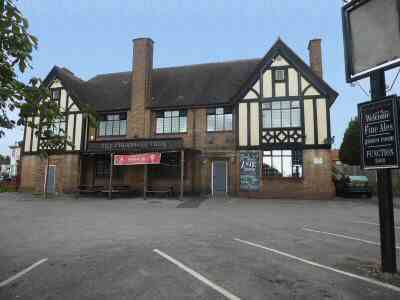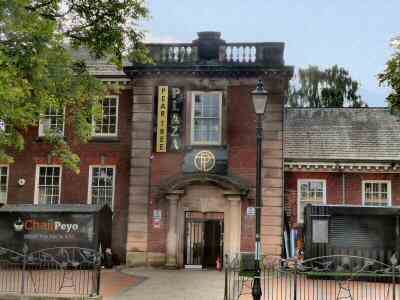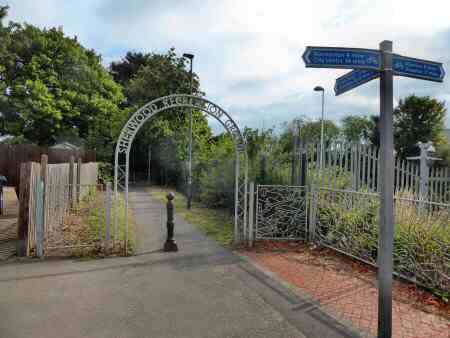PEAR TREE
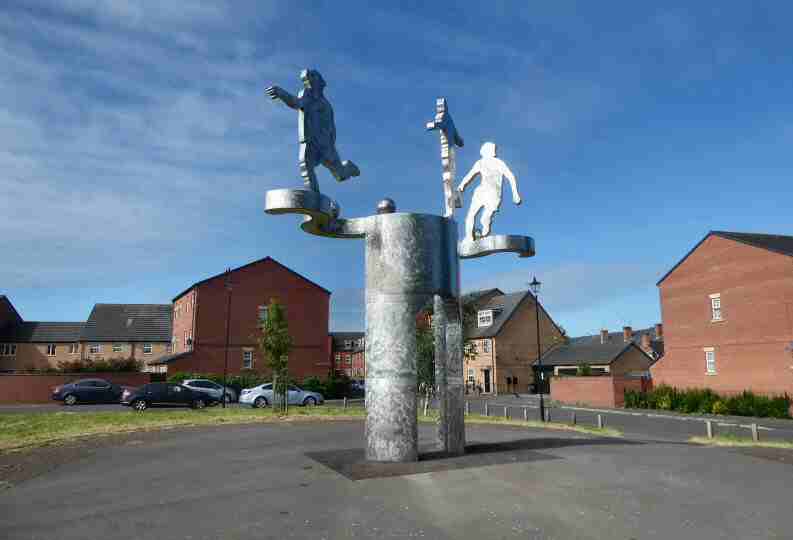
INFORMATION
Where is it? – Pear Tree is an inner-city suburb located about 1.2 miles south of the city centre.
What to do? – Take a look at the former Baseball Ground commemorative statue that was unveiled on the site on Shaftesbury Crescent in 2010. The 15 feet high metalwork featuring the silhouettes of three footballers dribbling and shooting was designed by artist Denis O’Connor – visit the National Sikh Heritage Centre and Holocaust Museum in Pear Tree. It is the only one of its kind in the world.
Where to eat? – There are several pubs and restaurants in Pear Tree that provide refreshments.
Other places to visit – Take a tour around the outside of Pride Park, Derby County’s home since 1997 and check to see when organised tours of the ground are being resumed – visit Alvaston Park with its attractive lake which provides a home for a large number of swans and other wildlife. Both native and exotic trees are to be found in the park. The park backs onto the River Derwent, where a riverside path/cycle route links both Derby City Centre in one direction and Elvaston Country Park in the other. There is also a BMX track – head for Osmaston Park and Moorways Sports Village where there is a prestigious Water Park with a 50m swimming pool and other leisure facilities. The adjacent Moorways Stadium provides a home for athletics and other sporting facilities.


PROFILE
Pear Tree got its name from Pear Tree Farm which was owned by the Peach family since the 18th century. Before Derby began to rapidly expand in the 19th century, with the arrival of the railway and industry. This led to the demolition of the Pear Tree farmhouse and the acquisition of the land for development. Several streets of terraced houses were built to accommodate industrial workers as business expanded. Many worked at Francis Ley’s Vulcan Iron Works which stood on a site next to the railway. Built in 1874, it expanded rapidly and was a major employer in the area until it was closed and demolished in 1986. The Vulcan Arms was named after the works.
Pear Tree Library (now Plaza Shopping Centre)
Pear Tree Library was built in 1913, to the design of Charles Bakewell Sherwin. It was one of 660 built in the UK with money donated by Scottish-American steel magnate and philanthropist Andrew Carnegie. It soon became one of the busiest in Derby. Until it was closed in 2018 due to structural damage to the ceiling. Repairs were estimated at £1.6 million, which were considered too costly by the council. The decision was then made to relocate the library to St Augustine’s Community Centre on Almond Street. A year later the library was put up for sale and is now a shopping centre.
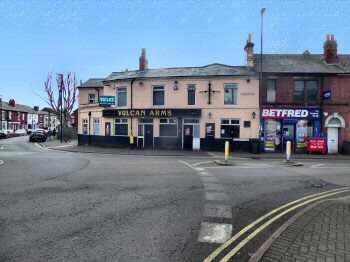
Peartree Railway Station (note the different spelling of Peartree)
Opened on 2 June 1890, Peartree and Normanton Railway Station as it was originally called. It was no doubt primarily used by people going to work. The booking office was at the top of the embankment fronting Osmaston Park Road, which runs across the bridge over the line. Gas lamps were used to light the platforms. Eleven trains per day to and from Derby were provided by the Midland Railway. As a result, the improved journey times led to the erection of further dwellings suitable for workmen. In the area between the station and the Barracks. Sherwood Recreation Ground runs alongside the railway line.
National Sikh Heritage Centre
The National Sikh Heritage Centre and Holocaust Museum in Pear Tree is the only one of its kind in the world. A modern museum, packed with real artefacts that allow the visitor to appreciate the rich and complex heritage of the Sikhs. That tells the story of the Sikhs, beginning in the times of the Gurus through to the present day in a fresh, informative, and inspirational manner. The museum aims to serve as a centre of excellence in the collection, conservation, preservation and interpretation of Sikh heritage in the UK and overseas. Almost 1 million Indian soldiers served with great distinction in the British Indian Army during the First World War. Military memorabilia is displayed including uniforms, letters and images relating to the war. Prayer tablets and scriptures rescued from a temple in Ukraine during the war with Russia are also displayed. It is open to the general public.
Baseball Ground
Pear Tree’s most famous landmark was the Baseball Ground until in 1997l Derby County Football Club moved to Pride Park. Originally the ground was used for baseball and formed part of Ley’s Recreation Centre. It was owned by Sir Francis Ley whose factory, Ley’s Malleable Castings Vulcan Ironworks stood nearby. He looked to establish a professional baseball club on the ground and for a time baseball was played successfully. Derby County Football Club was established in 1884 by Derbyshire County Cricket Club and played its matches in the middle of Racecourse Ground. When horse racing clashed with football fixtures the games were transferred to the Baseball Club. Until 1895 with baseball in decline, although they did not go out of existence, the football club made it their permanent home and renamed it the Baseball Ground. The club purchased the ground in 1924, where they remained for another 73 years. The ground has seen many successes and won the league title in seasons 1971/72 and 1974/75. They also won the FA cup in 1946.
Famous Pear Tree Footballers
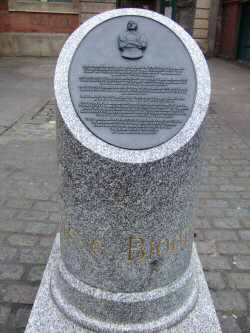
Steve Bloomer’s career began with Derby County in 1892 before he left to play for Middlesbrough in 1906. The team had a disastrous time without his services and suffered relegation as a result. In 1910, they re-signed him and in the first full season after his return, they were promoted. Bloomer continued playing for the club for four more years before ending his playing career in 1914. A statue in memory of Steve Bloomer was unveiled at Pride Park, the new home of Derby County Football Club, in January 2009. It was erected by his friends and admirers in appreciation of the service he gave to Derby County. Before that, a memorial to him was unveiled on 28 October 1996, in Lock-up Yard in the city centre. Although he was born in Cradley, he moved with his parents as a child to Pear Tree and went to St James’ Road School. Jack Bowers is another footballer who played for Derby County and lived on Pear Tree Road. He also made three appearances for England.
Alice Wheeldon
The Tiger Bar in Derby provides access for a subterranean trip down into the Derby Catacombs, barrel-vaulted tunnels beneath the Guildhall. Where during the Victorian era tunnels were used to convey prisoners. Between the Police Station in ‘Lock-up Yard’ and the Courts of Assize, which were held at the Guildhall. One of the best-remembered to be escorted through the tunnels was Alice Wheeldon, a left-wing revolutionary, from Pear Tree in Derby. She was the key individual allegedly involved in a plot to assassinate Prime Minister, Lloyd George, in 1917. Wheeldon was captured and tried at the Assize Court and given a ten-year sentence, while her co-conspirators got lesser terms. In January 2012, the BBC reported on a campaign to clear Alice Wheeldon’s name. It appeared that Wheeldon and her co-conspirators had planned to free prisoners whose only crime was to oppose the war. The strychnine that she had obtained was to kill the guard dogs at the Detention Centre. Where the conscientious objectors were being held so that they could be freed. It was not to be used to assassinate the Prime Minister. Her ghost is said to haunt the labyrinth of tunnels beneath the Guildhall.
